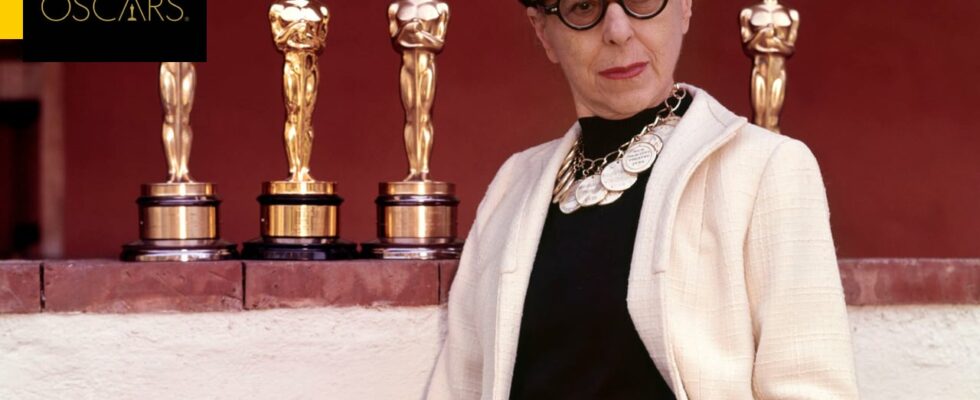Self-taught, fashion inspiration, breaking fashionable dress codes to better impose her own, costume designer Edith Head is a legend. The most successful woman in the history of the Oscars, she still remains an absolute model today.
In more than 50 years of career, his surname was synonymous with absolute Hollywood elegance. She was the inspiration for fashion, breaking fashionable dress codes to better impose her own. She was the precious confidante of many actresses of the golden age of Hollywood, such as Grace Kelly, Audrey Hepburn and Bette Davis.
And there were just as many of them who demanded in their contracts that she create the costumes for all their films. She has worked on more than 440 works, and created nearly 700 costumes during her career.
Today she still has the distinct honor of being, with a certain Walt Disney, the most successful personality in the history of the Oscars with 8 statuettes out of 35 citations, with even the feat of winning the same year, in 1951, two Oscars. One for the Samson and Delilah color film costumes; the other for the B&W film All About Eve (two separate Oscars were awarded in this category depending on whether the film was in B&W or color).
“She” is obviously Edith Head, the legendary costume designer.
A self-taught pioneer
Born Edith Claire Posener in 1897 in California, nothing initially predestined her for a career in Hollywood. A graduate of literature and language (including French) from the prestigious universities of Berkeley and Stanford, Edith Head began by teaching French as a substitute teacher.
In 1924, at the age of 26, and despite any experience in costume creation and design, she responded to a job offer as a designer in the “costumes” department of Paramount Studios. She created her first costume for a silent film in 1925, The Wanderer. Her work ended up being noticed on the film Lady Lou in 1933, for which she designed the dress of the statuesque Mae West.
In 1938, she was the first woman to head the costume department within a Major. Edith Head exercised her genius for 43 years at Paramount, before leaving to settle in 1967, at the age of 70, at Universal; probably to join her friend Alfred Hitchcock with whom she worked on eleven films.
oscars.org Edith Head at work.
Strapless dress
Among her fabulous creations, there was notably the famous white dress that she created in 1951 for Elisabeth Taylor in the film A Place in the Sun, and for which she won her third Oscar. It was a revolution: it was the first strapless dress.
The success was such that it was copied by all the designers and couturiers of the time. A dress so famous that it was a best-seller for weddings and proms in American high schools. Even today, she remains a model.
Below, an extract from the film “A Place in the Sun”, where Elizabeth Taylor appears in her famous dress…
His talent was not only exercised in creating costumes for films. Actresses also did not hesitate to ask her to design dresses worn during ceremonies, particularly the Oscars.
Audrey Hepburn, Grace Kelly…
His most famous creations were the dresses designed for Audrey Hepburn (with modifications by Hubert de Givenchy) for the Oscars ceremony in 1954, and that of Grace Kelly in 1955. This one, pastel blue, was long considered one of the most expensive dresses ever created, with a cost price of $4,000 just for the raw material.
Below, Edith Head herself presenting Audrey Hepburn’s costume trials for the classic Roman Holiday…
Post-mortem tribute
“My credo is to make the audience notice the actors, and not the clothes” said Edith Head mischievously. She worked in this way practically until the twilight of her life, when she died in October 1981 at the age of 83.
Not without irony, the last film she worked on was the comedy-homage to film noir Corpses Don’t Wear Suits, for her very fine knowledge of the costumes of the period that she created for so long. The film is also dedicated to him. Post-mortem tribute to a queen of Hollywood elegance, who, curiously, never liked to wear anything other than these four colors herself: black, white, beige, and brown.
